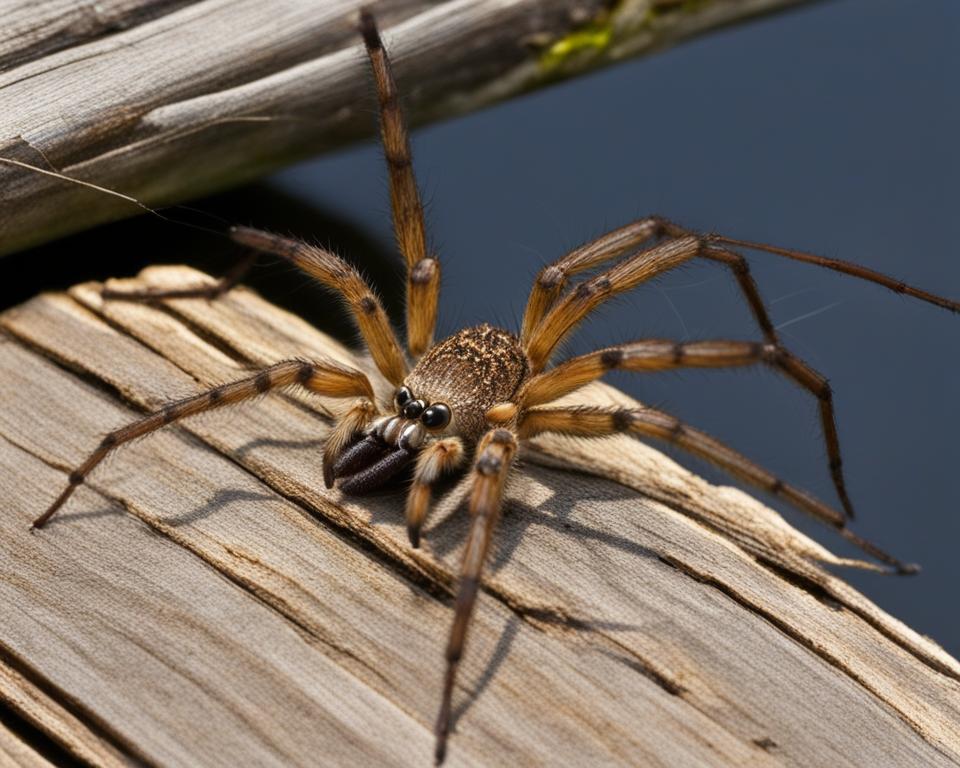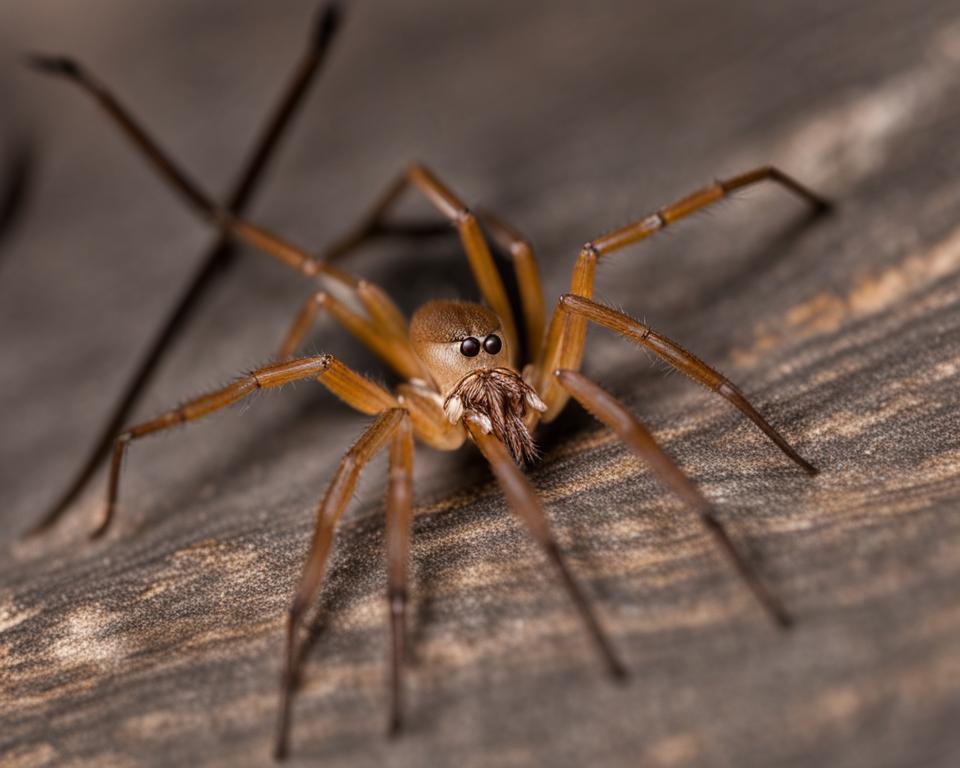Spiders are a common part of the environment and can be found almost everywhere. However, not all spiders are the same, and it’s essential to know the differences between them, especially when it comes to identifying and managing them. While some spiders are harmless, others can be venomous and pose potential risks to humans.
In this article, we will delve deeply into dock spiders versus brown recluses. Understanding the distinct characteristics and behaviors of these spiders can help you identify them accurately and be aware of the potential risks they pose. We’ll also explore their behavior and habitat, the symptoms and risks of their bites, and how to take necessary precautions for a spider-free environment.
Key Takeaways:
- Dock spiders and brown recluses are distinctly different and can be distinguished by their unique characteristics and markings.
- Both dock spiders and brown recluses can deliver bites, but the severity and symptoms depend on the spider species.
- Knowing the behavior and habitat of these spiders can help you avoid encounters and prevent infestations.
- If you suspect the presence of brown recluses, contact a professional pest control service for safe removal and prevention measures.
- Coexisting with spiders safely and taking necessary precautions can help ensure a spider-free environment.
Spider Identification: Dock Spiders
If you’re trying to identify a dock spider, there are several key characteristics to look for. Dock spiders, also known as fishing spiders or dock demons, are typically found in or near bodies of water, such as lakes, ponds, or rivers.
One of the defining features of dock spiders is their size. With a leg span of about 4 inches, they are one of the largest spider species in North America. They have dark brown or gray bodies with light markings, making them easy to spot in their natural habitat. Their legs are hairy and are designed to scuttle across the water’s surface.
One helpful tip for distinguishing dock spiders from other common spider species is their unique behavior. Dock spiders are excellent swimmers and hunters, preying on small fish and insects. They also create funnel-shaped webs in vegetation or under rocks as shelters.

Dock Spider Characteristics
| Characteristic | Description |
|---|---|
| Size | Leg span of approximately 4 inches |
| Color | Dark brown or gray body with light markings |
| Legs | Hairy, designed to scuttle across water’s surface |
| Habitat | Near bodies of water, commonly found in lakes, ponds, or rivers |
| Behavior | Excellent swimmers and hunters, preying on small fish and insects. Creates funnel-shaped webs in vegetation or under rocks as shelters |
By knowing these dock spider characteristics, you will be better equipped to identify these spiders and distinguish them from other common spider species.
Spider Identification: Brown Recluses
If you encounter a spider, it is essential to understand its behavior and potential risks associated with it. Brown recluse spiders are one of the venomous spiders that you should be able to identify quickly. They have a light brown body with long, thin legs and a distinctive violin-shaped marking on their back. One identifying feature of brown recluses is their six eyes, which is fewer than most spiders have. Compared to dock spiders, brown recluses are smaller with a leg span of about 1 inch, allowing them to fit in tight spaces.
Brown recluse spiders are known for their venomous bite, which can cause skin damage, including necrosis or death of the affected tissues. If you suspect that you have a brown recluse infestation in your home or office, it is essential to reach out to pest control professionals for safe removal and prevention measures.

Brown Recluse Spider Identification
| Key Identifiers | Details |
|---|---|
| Size | About 1 inch leg span |
| Body | Light brown with long, thin legs and violin-shaped marking on the back |
| Eyes | Six eyes instead of eight |
| Behavior | Prefer dark, dry, and undisturbed areas. |
| Habitat | The brown recluse spider can live indoors and outdoors throughout most of the United States, especially in the South and Midwest regions. |
By being able to identify brown recluses and understand their behaviors and habitats, you can take necessary precautions and keep yourself and your family safe from spider bites.
Spider Behavior and Habitat
If you want to identify a dock spider and brown recluse spider, you need to know their natural characteristics and behavior.
Dock spiders are most commonly found near water bodies like lakes, ponds, or rivers. These spiders tend to reside in moist areas of near bodies of water, creating funnel-shaped webs in vegetation or under rocks for shelter. They hunt prey like small fish and insects, and are exceptional swimmers, able to run on the water surface to capture their target. A dock spider’s preferred habitat near a water body creates a healthy ecosystem, where they can maintain insect populations in check. Remember, if you come across a dock spider, it is generally best to leave it alone.
Brown recluses have different preferences regarding their habitat. These spiders typically favor warm, dry conditions and are often found living in attics, basements, or closets. If disturbed, they come out from their hiding spots and bite as a defensive mechanism. Therefore, it is essential to know their habitat to prevent accidental encounters.
Spider Bite Symptoms and Risks
While both dock spiders and brown recluses can deliver bites, it’s essential to understand the differences in their venom and the consequent risks. Dock spider bites are generally harmless to humans and rarely result in severe symptoms. Their bites may cause localized pain, redness, and swelling, similar to a bee sting. However, allergic reactions can occur in some individuals.
Brown recluse venom, on the other hand, is significantly more potent and can cause serious medical issues. Symptoms of a brown recluse bite may include intense pain, a blister or lesion at the site of the bite, fever, nausea, and vomiting. If left untreated, the venom can cause tissue death, or necrosis, and lead to permanent scarring and disability.
It’s important to seek medical attention immediately if you suspect a brown recluse bite or have any symptoms that persist beyond a few days after a dock spider bite. Always inform your healthcare provider if you have been bitten by a venomous or poisonous spider to receive appropriate treatment.
Conclusion
Now that you know the differences between dock spiders and brown recluses, it’s important to take necessary steps for spider control and prevention in your home. If you suspect the presence of brown recluses or have experienced a spider bite, contact a professional pest control service for spider extermination and safe removal.
For spider prevention, make sure to seal any cracks or openings in your home’s foundation, install weather stripping on doors and windows, and keep your living space clean and clutter-free. Removing any spider webs you come across will also help prevent new spiders from taking up residence.
Remember, dock spiders play an important role in the ecosystem and are generally harmless to humans. If you encounter one outdoors, it’s best to leave it alone. By understanding how to differentiate between these spider species and taking necessary precautions, you can ensure a safe and spider-free environment in your home.
FAQ
How can I differentiate between dock spiders and brown recluses?
Dock spiders can be identified by their large size (about 4 inches leg span), dark brown or gray bodies with light markings, and hairy legs. Brown recluses, on the other hand, have a leg span of about 1 inch, light brown bodies, long thin legs, and a distinct violin-shaped marking on their back.
What are the habitat preferences of dock spiders and brown recluses?
Dock spiders prefer moist environments near bodies of water, such as lakes, ponds, or rivers. They create funnel-shaped webs in vegetation or under rocks as shelters. Brown recluses, on the other hand, are commonly found in dark and secluded areas such as basements, attics, and closets.
What are the symptoms and risks associated with spider bites from dock spiders and brown recluses?
Dock spider bites are typically harmless and may cause localized pain, redness, and swelling, similar to a bee sting. However, allergic reactions can occur in some individuals. Brown recluse bites, on the other hand, can result in more severe symptoms, including pain, swelling, blistering, and necrosis (tissue death). If you suspect a brown recluse bite, seek medical attention immediately.
How can I prevent spider infestations in my home?
To prevent spider infestations, ensure your home is well-sealed, with no gaps or cracks that spiders can enter through. Keep your home clean, remove clutter, and vacuum regularly to eliminate potential hiding spots. Additionally, reduce moisture levels in your home as spiders are attracted to damp areas, and consider using spider repellents or contacting a professional pest control service for assistance.
